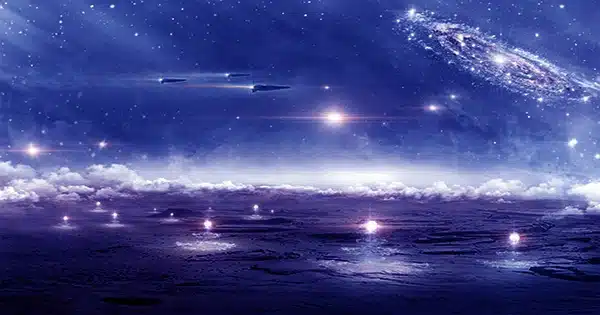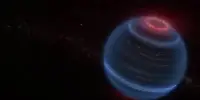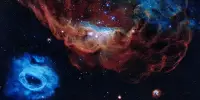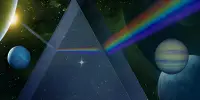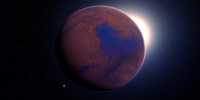A team of astronomers, led by Arizona State University Assistant Research Scientist Tim Carleton, identified a dwarf galaxy that appeared in James Webb Space Telescope images but was not the original observation focus.
Galaxies are gravitationally bonded together and comprise stars and planets, as well as enormous clouds of dust gas, and dark matter. Dwarf galaxies are the most common galaxies in the cosmos, and they are typically small and dim. They have fewer than 100 million stars, whereas the Milky Way contains approximately 200 billion stars.
Recent dwarf galaxy observations, which show an abundance of “ultra-diffuse galaxies” beyond the reach of previous large spectroscopic surveys, suggest that our understanding of the dwarf galaxy population is incomplete.
In a recently published study, Carleton and his team were first investigating a cluster of galaxies as part of the JWST Prime Extragalactic Areas for Reionization and Lensing Science (PEARLS) project.
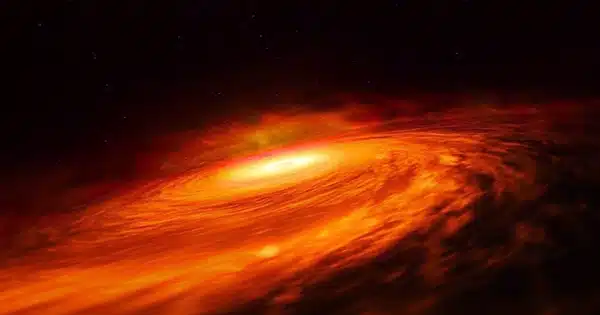
The dwarf galaxy, PEARLSDG, appeared in several of the team’s JWST images. It wasn’t the objective at all—just a little off the primary viewing field, in an area of space where they didn’t expect to see anything.
Their findings have been published in Astrophysical Journal Letters.
PEARLSDG lacked the expected characteristics of a dwarf galaxy. It is not interacting with a nearby galaxy, and it is not producing new stars. As it turns out, it’s a fascinating example of an isolated inactive galaxy.
“These isolated inactive dwarf galaxies have only been detected in a few situations before. They are not predicted to exist given our current understanding of galaxy evolution, thus the discovery of this object helps us strengthen our predictions about galaxy formation,” Carleton explained. “Generally, dwarf galaxies that are out there by themselves are continuing to form new stars.”
Until now, astronomers’ theory of galaxy evolution suggested that a galaxy would either remain isolated and continue to create young stars, or it would interact with a larger companion galaxy. This notion did not apply to PEARLSDG, which appears to be an ancient stellar population that does not generate new stars and remains isolated.
In addition, individual stars can be seen in the team’s JWST photos. These stars appear brighter in JWST wavelengths; this is one of the furthest galaxies where we can detect this level of detail. Astronomers can measure the distance between these stars, which is 98 million light-years, using their brightness.
Carleton, an assistant research scientist at the Beus Center for Cosmic Foundations in ASU’s School of Earth and Space Exploration, and his team employed a variety of data for this work.
This includes imaging data from JWST’s Near-InfraRed Camera (NIRCam), spectroscopic data from the DeVeney Optical Spectrograph on the Lowell Discovery Telescope in Flagstaff, Arizona, archival images from NASA’s Galex and Spitzer space telescopes, and ground-based images from the Sloan Digital Sky Survey and the Dark Energy Camera Legacy Survey.
JWST’s NIRCam has extremely high angular resolution and sensitivity, allowing the researchers to detect individual stars in this faraway galaxy. These observations brought the components of PEARLSDG into clear focus, just as individual cells would under a microscope.
Importantly, finding certain stars in the images offered a key clue to their distance—these stars have a unique intrinsic brightness, thus measuring their apparent brightness with JWST allowed the researchers to estimate how far away they are. It turns out that these were some of the most distant stars of their type ever observed.
To investigate the color of PEARLSDG, all archival imaging data from ultraviolet, optical, and infrared wavelengths were combined. Newly produced stars have a distinct color signature, hence the absence of one was used to demonstrate that PEARLSDG was not creating new stars.
The DeVeney Spectrograph at the Lowell Discovery Telescope separates light astronomical objects into various components, allowing astronomers to investigate their features in depth. For example, the exact wavelength shift recorded in spectroscopic data encodes information about PEARLSDG’s mobility utilizing the same Doppler effect used by radar guns to measure motorist speed on Arizona roadways.
This was critical in demonstrating that PEARLSDG is not connected with any other galaxy and is isolated.
Furthermore, because specific components in the spectrum are sensitive to the existence of young stars, the absence of those traits supported the imaging data’s estimations of the absence of young stars.
“This was absolutely against people’s expectations for a dwarf galaxy like this,” Carleton went on to say.
This revelation fundamentally alters astronomers’ view of how galaxies develop and evolve. It implies that numerous solitary inactive galaxies are waiting to be discovered and that JWST can do so.
This research was presented at the January 243 AAS press conference: Oddities in the Sky.
